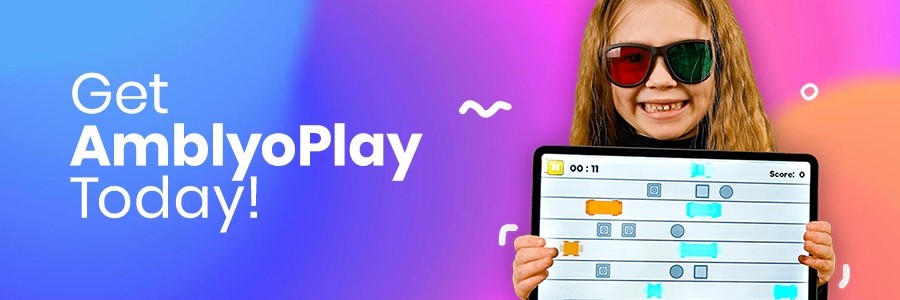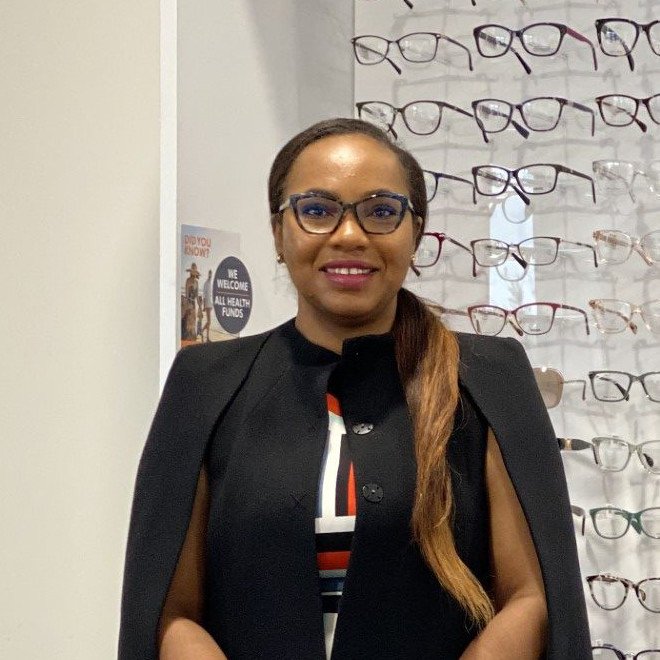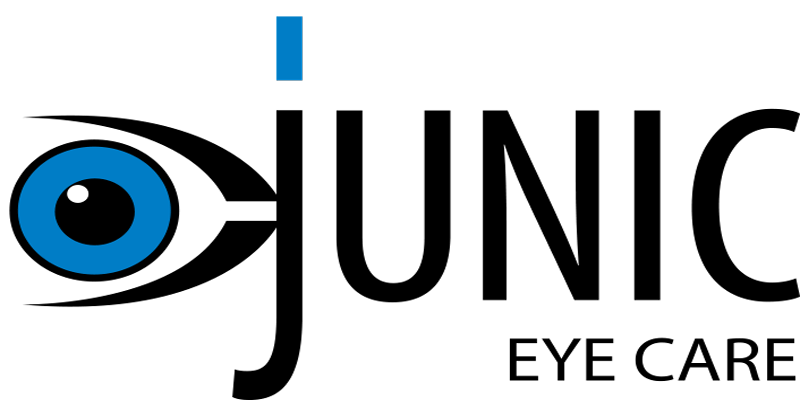Parents often ask questions about treatments for amblyopia. It is important to know the options and what to expect and how long the treatment take.
Amblyopia, often called “lazy eye,” is a common vision disorder in children. It occurs when one eye doesn’t develop normal vision. Parents frequently have questions about amblyopia treatment options. Understanding these options is crucial for managing expectations.
Early diagnosis and treatment are vital for effective management. Treatment for amblyopia includes corrective eyewear, patching, and vision therapy. Each option has its benefits and challenges.
Amblyopia exercises and tools like Amblyoplay vision therapy and in-office vision therapy can support treatment. These methods aim to improve visual acuity and eye coordination. Consistency and patience are key to success.
Parents should set realistic expectations. Improvement can take time, but with the right approach, positive outcomes are achievable.
What Is Amblyopia and Why Does It Happen?
Amblyopia is a vision development disorder affecting up to 3% of children. The condition arises when the brain Favors one eye over the other. This results in poor visual development of the affected eye.
Several factors can lead to amblyopia. Some common causes include:
- Strabismus (misalignment of the eyes)
- Significant difference in prescription between the eyes
- Cataract or other blockages in vision during early childhood
Understanding the underlying cause is essential for proper treatment. Early detection is crucial. The sooner amblyopia is diagnosed, the more effective the treatment becomes. It is most successful when started before age seven, but older children can still benefit.
What Are the Main Amblyopia Treatment Options?
Treating amblyopia requires a tailored approach. Different methods may be combined for optimal results. Here are the main options:
- Corrective eyewear is a common starting point. Glasses or contact lenses can address vision problems like near-sightedness or farsightedness. They can help balance vision between the eyes, often improving the weaker eye’s performance.
- Patching is another widely used treatment. By covering the stronger eye, patching forces the weaker eye to work harder. The duration and frequency of patching depend on the severity of amblyopia.
- Atropine drops provide an alternative to patching. These drops blur the vision in the stronger eye. This encourages the weaker eye to develop better focus.
- Vision therapy is a highly effective option. It includes a range of activities aimed at improving eye coordination and processing. Exercises focus on boosting eye tracking, focusing ability, and binocular vision.
- In some cases, doctors may recommend surgery. This is typically considered when strabismus or other physical issues need correction. The goal is to enhance alignment and improve overall visual development.
How Do Amblyopia Exercises and Vision Therapy Work?
Amblyopia exercises aim to strengthen the weaker eye. They improve visual acuity and coordination with the stronger eye. These exercises can be done at home or in a clinical setting.
Vision therapy involves structured activities. These are designed to develop the eye-brain connection. The activities target skills like tracking, focusing, and eye teaming. They help the brain process visual information from both eyes.
Common vision therapy exercises include:
- Eye tracking activities
- Focusing tasks with varied distances
- Binocular activities for eye teaming
Consistency is crucial for success. Regular practice of these exercises can lead to significant improvements. Improvements are often seen in the child’s overall visual capabilities.
What Is Amblyoplay Vision Therapy?
Amblyoplay vision therapy is an innovative digital tool. It’s designed to enhance traditional amblyopia treatment methods. This platform uses interactive exercises to engage children actively.
The therapy leverages modern technology. It provides a customizable experience tailored to individual needs. Through gamified exercises, it encourages consistent practice.
Key features of Amblyoplay include:
- Interactive games for improved engagement
- Progress tracking for parents and professionals
- Personalized exercise programs

This approach makes treatment more appealing to young users. It helps children stay motivated and committed to their vision improvement journey. The engaging nature of this tool can lead to better treatment outcomes.
How Long Does Amblyopia Treatment Take?
The duration of amblyopia treatment varies significantly. Factors influencing the timeline include the child’s age and the severity of the condition. Early diagnosis often leads to quicker improvements.
Children generally progress at different rates. While some may show changes within weeks, others require months or even years. Consistency in treatment is crucial for success.
Parents should maintain regular check-ins with eye care professionals. This ensures that the treatment remains on track and adjustments are made when necessary. Typical timelines may include:
- Weeks for mild cases
- Months for moderate conditions
- Years in severe or late-diagnosed cases
Patience and persistence are essential, as gradual improvements lead to the best outcomes.
What Can Parents Expect During Treatment?
Parents can expect a gradual process. Visible improvements might take time, requiring patience and persistence. Children’s cooperation plays a key role in treatment success.
Treatment generally involves frequent follow-up appointments. Eye care professionals will monitor progress and make necessary adjustments. Consistency in following prescribed routines is essential.
Parents should be prepared for varied emotional responses. Encouragement and support can enhance adherence to the regimen. Typical experiences include:
- Frequent visits for monitoring progress
- Adjustments to treatment methods as needed
- Fluctuating emotions from the child
- Long-term commitment to the treatment plan
Understanding these expectations can help parents remain positive and supportive throughout the treatment journey.
How Can Parents Help Their Child Succeed with Treatment?
Parents play a crucial role in their child’s amblyopia treatment. Active involvement can greatly influence the outcome. Encouragement and understanding build a supportive environment.
Children often need motivation to stick to their therapy. Make the process fun by incorporating games or rewards. Positive reinforcement can boost their morale and compliance.
Communication with the eye care team is essential. Ensure you’re following their instructions carefully. Here are some helpful practices for parents:
- Set regular reminders for exercises or patching
- Celebrate small successes to keep motivation high
- Educate your child about their condition
- Create a routine that includes treatment tasks
- Together, these efforts can make a significant difference in your child’s vision journey.
Are There Risks or Side Effects to Amblyopia Treatments?
Amblyopia treatments are generally safe. However, like any medical intervention, there may be some minor side effects. Most issues are manageable and temporary.
Common side effects include discomfort or frustration during eye patching. Some children experience blurry vision with atropine drops. Here’s what to watch for:
- Skin irritation from patches
- Temporary vision changes
- Mild eye discomfort
Consult your eye care professional if concerns arise. They can help adjust treatment and address any problems.
When Should You See an Eye Care Professional?
Early eye checks are crucial for amblyopia. If you notice signs, consult a professional promptly. Look for:
- Difficulty focusing
- Misaligned eyes
- Poor depth perception
Detecting amblyopia early enhances treatment success. Reach out to an expert at Junic Eyecare Coombs with any concerns.
Key Takeaways for Parents
Amblyopia treatment requires patience and consistent effort. Start early and remain committed to the treatment plan for optimal results.
Key points for parents to remember:
- Treatment is more effective at a young age.
- Combining methods can enhance outcomes.
- Encourage children throughout the process.
Understanding these can ensure your child receives the best possible care, leading to improved vision and quality of life.
If you need more questions answered, contact us on (02) 6152 8585 or book in for an appointment www.juniceyecare.com.au .

CANBERRA OPTOMETRIST
Juliet obtained her Doctor of Optometry degree from the University of Benin, Nigeria in 2006. She completed an internship programme before migrating to Australia, where she completed a master’s degree in public health at the University of Sydney in 2014. Following this, Juliet obtained a Master of Orthoptics from the University of Technology Sydney (UTS) in 2017.
Juliet has completed her competency in optometry examination with OCANZ (Optometry Council of Australia and New Zealand), and obtained her ophthalmic prescribing rights from ACO (Australian College Of Optometry Victoria). Juliet has worked in various positions, including retail Optometry, the Ophthalmology Department at Canberra Hospital, and more recently, at the John Curtin School of Medical Research (ANU).
As a dedicated Canberra optometrist, Juliet is passionate about helping people with low vision, and binocular vision anomalies hence her interests in Low Vision Rehabilitation, Eccentric Viewing Training and Paediatric optometry.

